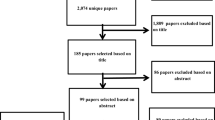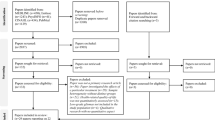Abstract
During the end of life (EOL) phase of high-grade glioma (HGG) patients, care is primarily aimed at reducing symptom burden while maintaining quality of life as long as possible. In this study, we evaluated the prevalence of symptoms and medication management in HGG patients during the EOL phase. We analyzed disease-specific symptoms, general EOL symptoms, symptom frequency, and medication use at 3 months and 1 week before death in a cohort of 178 HGG patients, based on questionnaires completed by physicians responsible for EOL care. In addition, information on patient’s perceived quality of care (QOC) was derived from 87 questionnaires completed by patient’s relatives. Somnolence, focal neurological deficits and cognitive disturbances were the most prevalent symptoms during the EOL phase. Overall, disease-specific symptoms occurred more often than general EOL symptoms at both 3 months and 1 week before death. Somnolence and/or dysphagia were present in 81 % of patients whose medication was withdrawn and 96 % of patients in whom antiepileptic drugs (AEDs) were withdrawn. One week before death, 65.9 % of patients with high symptom frequency experienced good QOC, compared to 87.5 % of patients with low symptom frequency (p = 0.032). Disease-specific symptoms are the main concern in EOL care for HGG patients. Somnolence and dysphagia may hamper the regular oral administration of drugs, and particularly AEDs, during the EOL phase. High symptom frequency at 1 week before death negatively affects patient’s perceived QOC.


Similar content being viewed by others
References
Crocetti E, Trama A, Stiller C, Caldarella A, Soffietti R, Jaal J et al (2012) Epidemiology of glial and non-glial brain tumours in Europe. Eur J Cancer 48(10):1532–1542
Ricard D, Idbaih A, Ducray F, Lahutte M, Hoang-Xuan K, Delattre JY (2012) Primary brain tumours in adults. Lancet 379(9830):1984–1996
Wen PY, Kesari S (2008) Malignant gliomas in adults. N Engl J Med 359(5):492–507
Pace A, Metro G, Fabi A (2010) Supportive care in neurooncology. Curr Opin Oncol 22(6):621–626
Sizoo EM, Pasman HR, Dirven L, Marosi C, Grisold W, Stockhammer G et al (2014) The end-of-life phase of high-grade glioma patients: a systematic review. Support Care Cancer 22(3):847–857
Walbert T, Khan M (2014) End-of-life symptoms and care in patients with primary malignant brain tumors: a systematic literature review. J Neurooncol 117(2):217–224
Heimans JJ, Taphoorn MJ (2002) Impact of brain tumour treatment on quality of life. J Neurol 249(8):955–960
Janda M, Steginga S, Langbecker D, Dunn J, Walker D, Eakin E (2007) Quality of life among patients with a brain tumor and their carers. J Psychosom Res 63(6):617–623
Sizoo EM, Braam L, Postma TJ, Pasman HR, Heimans JJ, Klein M et al (2010) Symptoms and problems in the end-of-life phase of high-grade glioma patients. Neuro Oncol 12(11):1162–1166
Bausewein C, Hau P, Borasio GD, Voltz R (2003) How do patients with primary brain tumours die? Palliat Med 17(6):558–559
Sizoo EM, Taphoorn MJ, Uitdehaag B, Heimans JJ, Deliens L, Reijneveld JC et al (2013) The end-of-life phase of high-grade glioma patients: dying with dignity? Oncologist 18(2):198–203
Pace A, Di LC, Guariglia L, Jandolo B, Carapella CM, Pompili A (2009) End of life issues in brain tumor patients. J Neurooncol 91(1):39–43
Oberndorfer S, Lindeck-Pozza E, Lahrmann H, Struhal W, Hitzenberger P, Grisold W (2008) The end-of-life hospital setting in patients with glioblastoma. J Palliat Med 11(1):26–30
Ostgathe C, Gaertner J, Kotterba M, Klein S, Lindena G, Nauck F et al (2010) Differential palliative care issues in patients with primary and secondary brain tumours. Support Care Cancer 18(9):1157–1163
Faithfull S, Cook K, Lucas C (2005) Palliative care of patients with a primary malignant brain tumour: case review of service use and support provided. Palliat Med 19(7):545–550
Koekkoek JA, Dirven L, Reijneveld JC, Sizoo EM, Pasman HR, Postma TJ, et al. (2014) End of life care in high-grade glioma patients in three European countries: a comparative study. J Neurooncol
Sizoo EM, Pasman HR, Buttolo J, Heimans JJ, Klein M, Deliens L et al (2012) Decision-making in the end-of-life phase of high-grade glioma patients. Eur J Cancer 48(2):226–232
Sizoo EM, Dirven L, Reijneveld JC, Postma TJ, Heimans JJ, Deliens L et al (2014) Measuring health-related quality of life in high-grade glioma patients at the end of life using a proxy-reported retrospective questionnaire. J Neurooncol 116(2):283–290
Liu Y, Zhang PY, Na J, Ma C, Huo WL, Han L et al (2013) Prevalence, intensity, and prognostic significance of common symptoms in terminally ill cancer patients. J Palliat Med 16(7):752–757
Ruijs CD, Kerkhof AJ, van der Wal G, Onwuteaka-Philipsen BD (2013) Symptoms, unbearability and the nature of suffering in terminal cancer patients dying at home: a prospective primary care study. BMC Fam Pract 14:201
Costantini M, Ripamonti C, Beccaro M, Montella M, Borgia P, Casella C et al (2009) Prevalence, distress, management, and relief of pain during the last 3 months of cancer patients’ life. Results of an Italian mortality follow-back survey. Ann Oncol 20(4):729–735
Potter J, Hami F, Bryan T, Quigley C (2003) Symptoms in 400 patients referred to palliative care services: prevalence and patterns. Palliat Med 17(4):310–314
Behin A, Hoang-Xuan K, Carpentier AF, Delattre JY (2003) Primary brain tumours in adults. Lancet 361(9354):323–331
Steigleder T, Stiel S, Ostgathe C (2013) Dying of brain tumours: specific aspects of care. Curr Opin Support Palliat Care 7(4):417–423
Lo C, Zimmermann C, Rydall A, Walsh A, Jones JM, Moore MJ et al (2010) Longitudinal study of depressive symptoms in patients with metastatic gastrointestinal and lung cancer. J Clin Oncol 28(18):3084–3089
Ruijs CD, Kerkhof AJ, van der Wal G, Onwuteaka-Philipsen BD (2011) Depression and explicit requests for euthanasia in end-of-life cancer patients in primary care in the Netherlands: a longitudinal, prospective study. Fam Pract 28(4):393–399
De Korte-Verhoef MC, Pasman HR, Schweitzer BP, Francke AL, Onwuteaka-Philipsen BD, Deliens L (2014) Reasons for hospitalisation at the end of life: differences between cancer and non-cancer patients. Support Care Cancer 22(3):645–652
Hall P, Schroder C, Weaver L (2002) The last 48 hours of life in long-term care: a focused chart audit. J Am Geriatr Soc 50(3):501–506
Liu Y, Zhang PY, Na J, Ma C, Huo WL, Han L et al (2013) Prevalence, intensity, and prognostic significance of common symptoms in terminally ill cancer patients. J Palliat Med 16(7):752–757
Gagnon P, Allard P, Gagnon B, Merette C, Tardif F (2012) Delirium prevention in terminal cancer: assessment of a multicomponent intervention. Psychooncology 21(2):187–194
Pace A, Villani V, Di LC, Guariglia L, Maschio M, Pompili A et al (2013) Epilepsy in the end-of-life phase in patients with high-grade gliomas. J Neurooncol 111(1):83–86
Sizoo EM, Koekkoek JA, Postma TJ, Heimans JJ, Pasman HR, Deliens L et al (2014) Seizures in patients with high-grade glioma: a serious challenge in the end-of-life phase. BMJ Support Palliat Care 4(1):77–80
Krouwer HG, Pallagi JL, Graves NM (2000) Management of seizures in brain tumor patients at the end of life. J Palliat Med 3(4):465–475
Raijmakers NJ, van Zuylen L, Furst CJ, Beccaro M, Maiorana L, Pilastri P et al (2013) Variation in medication use in cancer patients at the end of life: a cross-sectional analysis. Support Care Cancer 21(4):1003–1011
Lindqvist O, Lundquist G, Dickman A, Bukki J, Lunder U, Hagelin CL et al (2013) Four essential drugs needed for quality care of the dying: a Delphi-study based international expert consensus opinion. J Palliat Med 16(1):38–43
Pisani F, Oteri G, Costa C, Di RG, Di PR (2002) Effects of psychotropic drugs on seizure threshold. Drug Saf 25(2):91–110
Cherny NI, Portenoy RK (1994) Sedation in the management of refractory symptoms: guidelines for evaluation and treatment. J Palliat Care 10(2):31–38
Maltoni M, Scarpi E, Nanni O (2013) Palliative sedation in end-of-life care. Curr Opin Oncol 25(4):360–367
Bukki J, Scherbel J, Stiel S, Klein C, Meidenbauer N, Ostgathe C (2013) Palliative care needs, symptoms, and treatment intensity along the disease trajectory in medical oncology outpatients: a retrospective chart review. Support Care Cancer 21(6):1743–1750
Temel JS, Greer JA, Muzikansky A, Gallagher ER, Admane S, Jackson VA et al (2010) Early palliative care for patients with metastatic non-small-cell lung cancer. N Engl J Med 363(8):733–742
Acknowledgments
This work was supported by the St. Jacobusstichting The Hague, Foundation ‘ZOLEON’ and Foundation ‘Chanrone’.
Conflict of interest
The authors have declared no conflict of interest.
Author information
Authors and Affiliations
Corresponding author
Rights and permissions
About this article
Cite this article
Koekkoek, J.A.F., Dirven, L., Sizoo, E.M. et al. Symptoms and medication management in the end of life phase of high-grade glioma patients. J Neurooncol 120, 589–595 (2014). https://doi.org/10.1007/s11060-014-1591-2
Received:
Accepted:
Published:
Issue Date:
DOI: https://doi.org/10.1007/s11060-014-1591-2




